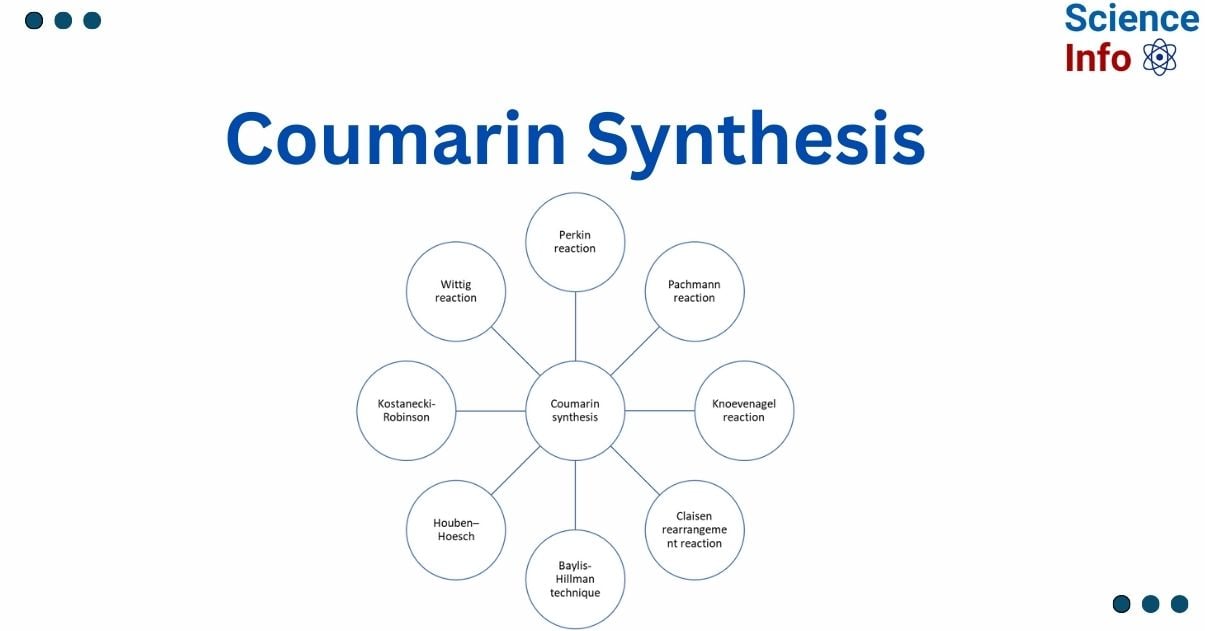
Coumarins are one of the most privileged scaffolds, appearing in a wide range of natural goods and bioactive compounds. They have an impressively broad range of applications in medical sciences, scientific research, and a variety of businesses, including perfumery. Medicinal chemists have long been interested in heterocyclic molecules due to their various biological properties. These qualities include antioxidant, anticonvulsant, anticancer, anti-inflammatory, and antibacterial activity. The coumarin heterocyclic ring system is frequently employed, particularly in the pharmaceutical industry, to provide a variety of functional groups in medicinal compounds.
The FDA has approved several coumarin derivatives for clinical use. These include anticoagulant medications including warfarin, acenocoumarol, dicoumarol, phenprocoumon, and trioxsalen. Coumarins also function as selective enzyme inhibitors; they can interact with targets in the therapy of disorders such as Parkinson’s and Alzheimer’s, and they have lately been widely used in the development of small-molecule fluorescent chemosensors.
Interesting Science Videos
Different methods of Coumarin Synthesis
Coumarin and its derivatives can be derived from several natural resources; however, this is a time-consuming procedure. As a result, organic chemists have focused heavily on its preparation. So far, numerous techniques for coumarin synthesis have been established, including both metal-free and metal-catalytic routes. Different methods for the synthesis of coumarin include:
Perkin reaction
Pekin demonstrated the method for producing coumarin for the first time in 1968, using the condensation reaction of simple salicylaldehyde in the presence of acetic anhydride.
During the Perkin reaction, salicylaldehyde and acetic anhydride are combined under a basic reaction environment. This produces α, β-unsaturated aromatic acid in the presence of sodium acetate, followed by intramolecular cyclization to create the anticipated substituted coumarin.

Pachmann reaction
Hans von Pechmann, a German scientist, synthesized coumarins by reacting phenols with carboxylic acid or ester molecules with the afunctional group β-carbonyl. Pechmann condensation is used to synthesize coumarins by reacting phenols with β-keto esters. The reaction is carried out with a strong acid, such as methanesulfonic acid, or a Lewis acid, like AlCl3. The acid catalyzes transesterification and keto-enol tautomerization.

Knoevenagel reaction
The Knoevenagel reaction includes the condensation of different o-hydroxy aldehydes with active methylene compounds in the presence of a base catalyst. Many coumarin derivatives have been synthesized from appropriate starting materials using a Knoevenagel process.
Coumarins can be synthesized from salicylaldehydes by tandem Knoevenagel condensation and intramolecular cyclization with ethyl acetoacetate or dialkyl malonates, which have an active methylene group in a basic media. Salicylaldehydes and diethylmalonate were refluxed using piperidine as a catalyst to produce 2H-chromene-3-carboxylate.

Claisen rearrangement reaction
Trifluoroacetic acid (TFA) is used as a homogeneous promoter in the Claisen rearrangement procedure to produce 3,4-substituted coumarin. The reaction of phenol with protected allyl alcohol in the presence of basic conditions yields the desired target compound, which is then subjected to 3,3 sigmatropic Claisen rearrangement in the presence of TFA at moderate temperatures, followed by tautomerism or basic conditions to produce 3,4-substituted coumarin in good yield.

Baylis-Hillman technique
The Baylis-Hillman technique has been used in the synthesis of substituted coumarin. 2-hydroxybenzaldehydes react with methyl acrylate (R2 = Me) in the presence of DABCO (1,4-Diazabicyclo[2.2.2]octane) to generate a combination of chromenes and coumarins.

Wittig reaction
Coumarin derivatives are generated as a result of the Wittig reaction. This reaction involves the reaction between aromatic aldehydes or ketones with a phosphonate or phosphorous ylide.
Modified coumarins can be produced in high yields via intramolecular Wittig cyclization from phenolic compounds with an ortho-carbonyl group and triphenyl (α-carboxymethylene)phosphorane imidazole ylide. All reactions proceed via the creation of phosphorane intermediates, as demonstrated by spectroscopic evidence.

Houben–Hoesch
Houben–Hoesch reaction is a condensation reaction. It involves the reaction of β-keto nitriles and phenol derivatives to form Comarin.

Kostanecki-Robinson
The Kostanecki-Robinson coupling reaction could be used to create coumarin derivatives. The reaction of aliphatic anhydride with aryl ketone with a hydroxyl group substitution generates the desired product as coumarin with good yields.

Heck-Lactonization reaction
The Heck-Lactonization reaction can be used to synthesize coumarin analogs using Pd catalysis, and several reaction conditions were explored utilizing aqueous solutions and organic solvents.

Michael addition reaction
By combining 2-hydroxybenzaldehydes and α-aroylketene dithioacetals with a catalytic quantity of piperidine in refluxing THF, it is possible to synthesize 3-aroylcoumarins in high yield.

Coumarin synthesis by intermolecular hydroarylation of alkene
Direct C-H bond alkenylation is another appealing technique for coumarin synthesis, and some successful instances have been established, including Pd-catalyzed arylation of acrylates. Kitamura and colleagues published the first palladium-catalyzed reaction in 2005.
Several phenols were reacted with ethyl cinnamate, ethyl crotonate, and ethyl acrylate to generate the respective compounds in moderate to good yields. Under the reaction circumstances, the oxidative coupling of electron-rich phenols was a competitive reaction, resulting in lower product yields.

References
- https://www.vedantu.com/chemistry/coumarin-synthesis
- https://byjus.com/chemistry/coumarin-synthesis/
- https://pubmed.ncbi.nlm.nih.gov/20884461/
- https://www.mdpi.com/2304-6740/10/2/23#B30-inorganics-10-00023
- https://pubs.rsc.org/en/content/articlelanding/1998/jc/a801724g
- https://www.primescholars.com/articles/synthesis-of-novel-coumarin-derivatives-and-its-biological-evaluations.pdf
